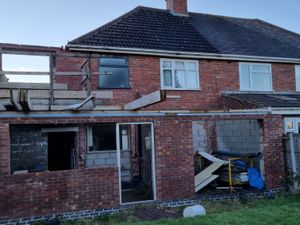House extension appeal dismissed over ‘harmful’ appearance of new roof
Plans to build a house extension were dismissed by the planning inspectorate, who claimed the roof conversion would “harm” the character of the area.

The report, to be heard at Sandwell Council’s planning committee next Thursday, details a battle between the applicant and the planning inspectorate over what is possible to construct.
Mr Pavinder Rattu, the applicant, wished to develop a ground and first floor side extension at Aspley Road, Oldbury.
Single storey rear and front extensions with new porch, loft conversion with rear dormer windows, and fenestration alterations, were also requests for development for Mr Rattu.
But Sandwell Council’s planning team refused the application in May last year. The team determined the hipped to gable conversion on top of the proposed side extension would be “out of keeping with the local area”.
The Residential Design Guide, a planning document used by Sandwell Council states design out of keeping with the area “will be resisted”.
It states: “Poor quality domestic extensions which require planning consent that do not fit in visually or are clearly out of keeping with their surroundings, by virtue of their scale, architectural design, proposed materials and impact on neighbouring properties, will be resisted.
“Extensions must be in proportion to the scale of the existing dwelling and street scene. The over intensification of individual dwellings where it is proposed to extend them to a scale that is considered unreasonable will be resisted.
“For example where proposals impact unduly on neighbouring properties or street scene, where the amount of remaining private amenity or defensible space could be significantly reduced, or where sufficient space for car parking demand could not be provided within plot.”
A planning inspectorate, identifiable only as K Townsend, visited the Oldbury property in November last year.
He concluded while matching materials would be used to develop the property, it would be “unsymmetrical and unbalanced” and result in harm to the character of the area.
“The hipped roofs currently contribute positively to the area and the previously approved schemes complimented each other […] whereas the appeal proposal would substantially alter the appearance of one half of the pair of semi-detached houses.”
Mr Pattu, in his appeal, compared other houses on Aspley Road which are undergoing construction of hip to gable roofs.
But Mr Townend said they do not “make a positive contribution to the character of the area”.
He also concluded other roof conversions on similar roads in the local area “were all carried out under permitted development rights and were therefore not approved by the council.”
He added: “I cannot draw any direct comparison between these examples and the appeal proposal that would weigh in its favour.”
Mr Townend concluded: “The wider benefits of homeowners extending and altering their homes is not quantified and, even if I were to accept that there was a benefit, this does not outweigh the harm identified above.
“For the above reasons, having had regard to the development plan as a whole, along with all other relevant material considerations, I conclude that the appeal should be dismissed.”




